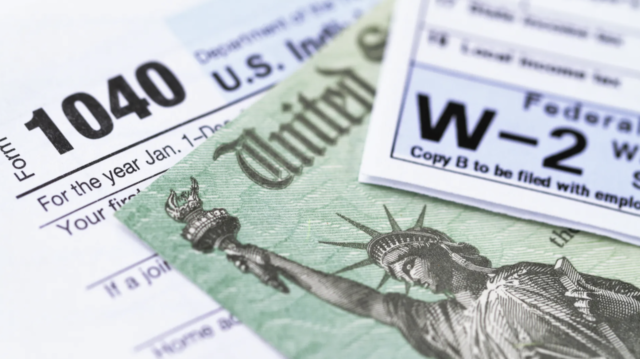Every year, I watch business owners and real estate investors make the same costly mistake: they wait until tax season to start thinking about taxes. By then, it’s too late.
If you want to truly minimize your tax burden, you can’t wait until April. The key is to plan before December 31st because that’s when most strategies have to be executed.
Personally, I review my taxes every single month. I only sit down with my CPA two or three times a year, but my calendar includes a monthly reminder to check what’s new in tax law and how I can use it to my advantage. Taxes are the number one expense in most people’s lives. Reducing that expense is one of the fastest ways to build wealth.
Here are four powerful tax strategies that you can still use before year-end to keep more of what you earn.

1. Prepay Expenses to Accelerate Deductions
If you own a business, this one’s for you. Prepaying expenses is an easy way to reduce taxable income before the end of the year.
This strategy involves pulling future expenses into the current tax year, even if you won’t use the product or service until next year. For example:
-
Annual software or trade subscriptions (like CoStar, Yardi, or Zoom)
-
Coaching or training programs
-
Rent or lease payments
-
Marketing campaigns planned for Q1 or Q2
-
Consulting or PR retainers
-
Travel, event tickets, and conferences
If you know you’ll be spending the money anyway, prepaying it this year can lower your taxable income. Every dollar you spend on your business is a dollar off your taxable income.
Let’s say you’re in a 40% tax bracket. Every $1,000 prepaid could save you $400 immediately. Think of it as the government rewarding you for growing your business.
2. Bonus Depreciation: Deduct Big Purchases Immediately
Bonus depreciation allows you to write off the full cost of qualifying assets in the year you buy and place them in service.
Eligible assets include:
-
Vehicles over 6,000 pounds (G-Wagons, trucks, Escalades)
-
Office equipment, furniture, and tools
-
Computers and technology
-
Real estate improvements such as billboards or signage
For example, I’ve been buying billboards in Las Vegas. I can write off almost 100% of the purchase price this year, and next year, I’ll deduct the cost of converting them to digital.
But remember, never buy something just for the deduction. Buy it because your business needs it. The deduction is just the bonus.
Ross and I even started a billboard company as part of our tax strategy. We had gains from selling older apartment assets, and this business helped us offset those taxes while creating new income streams.
3. Income Shifting: Keep It in the Family (Legally)
This is one of the most overlooked strategies for small business owners.
Income shifting means transferring income from a higher tax bracket to a lower one. You can legally shift income to your kids, parents, or even business entities in lower brackets.
For example, you can pay your children (under 18) up to $14,600 per year completely tax-free for legitimate work such as social media management, packaging, or admin support.
If your parents help with advisory work or administrative tasks, they can also be compensated, moving that income into a lower tax bracket.
There’s also an annual gift tax exemption of $19,000 per person, which you can use to transfer wealth tax-free each year.
The key here is documentation. Treat it like real employment with timesheets, contracts, and job descriptions. Done correctly, this strategy can save thousands each year while keeping money in your family.
4. Cost Segregation: The Real Estate Investor’s Secret Weapon
Cost segregation is one of the most powerful tools available to real estate investors.
Instead of depreciating your entire property evenly over 27.5 years, cost segregation breaks the property into faster-depreciating components like carpets, cabinets, appliances, and landscaping.
Here’s a quick example:
You buy an apartment building for $1 million. The land is worth $200,000, so the building value is $800,000. Normally, you’d get about $29,000 in annual depreciation. But with cost segregation, you can accelerate 20–30% of that value into the first year.
If you accelerate 25%, that’s $200,000. With bonus depreciation, you could write off 60% of that ($120,000) immediately, plus your standard $29,000, giving you nearly $150,000 to $200,000 in first-year deductions.
This strategy is especially valuable for investors in syndications or partnerships since everyone in the deal benefits from those deductions.
We use professional CPA-prepared cost segregation studies for all our properties. They take time, so start the process before the end of the year to make sure it counts for this tax cycle.
The Bottom Line
Taxes aren’t just a form you fill out in April; they’re a year-round strategy.
If you plan ahead, you can take advantage of deductions, depreciation, and deferrals that most investors completely overlook. These strategies don’t just save money; they compound wealth by freeing up cash flow that can be reinvested into more income-producing assets.
So don’t wait until your accountant calls you in spring. Call them this week, review your year-end options, and make your money work smarter before December 31st.



